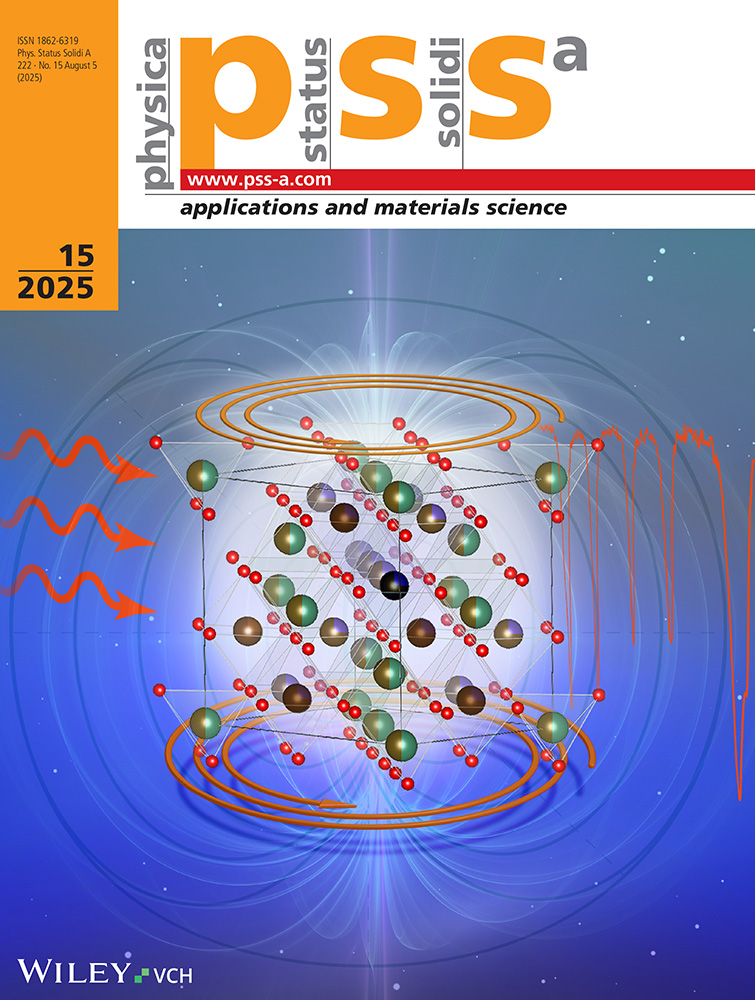Electron Diffraction and Electron Microscopy of the Superconducting Compound Ba2YCu3O7–δ
P.O. Box, 9502 Leiden, The Netherlands.
Groenenborgerlaan 171, B-2020 Antwerpen, Belgium.
Abstract
enThe superconducting transition temperature in the compound Ba2YCu3O7–δ exhibits a positive correlation with the magnitude of the volume fraction of the orthorhombic phase in two-phase material, showing that this phase is responsible for the high transition temperature (>90 K). It cannot be excluded that the low temperature tetragonal phase is also superconducting with a lower transition temperature. The orthorhombic phase is fragmented in fine coherent twin lammellae parallel with (110) and (110) planes; they result from the decrease in symmetry 4/mmm → mmm on cooling through the high temperature tetragonal (TH) → orthorhombic (O). The orthorhombic phase can be transformed back into the high temperature tetragonal phase by “in-situ” heating in the electron microscope. This reversible phase transformation takes place at a temperature of the order of 750 °C, where the vacancies on the oxygen sublattice become disordered. In well annealed specimens weak superstructure spots are sometimes observed at 1/2 0 0 and 0 1/2 0 positions; they are attributed to a 2a0 × b0 superstructure resulting from vacancy ordering. Weak streaking along [001]* is attributed to disordering in the direction of vacancy ordering in successive CuO planes. The high temperature tetragonal phase can be retained on fast cooling. The high resolution images of the orthorhombic phase along the [100], [001] and [010] zones are consistent with the crystal structure of Ba2YCu3O7–δ proposed recently. Evidence is presented for the occurrence of disorder in the cation sublattice. In rapidly cooled specimens the cation disorder causes lattice deformation.
Abstract
deDie Supraleitungsübergangstemperatur in der Verbindung Ba2YCu3O7–δ zeigt eine positive Korrelation mit der Größe des Volumenanteils der rhombischen Phase im Zwei-Phasen-Material, was darauf hinweist, daß diese Phase für die hohe Übergangstemperatur (>90 K) verantwortlich ist. Es kann nicht ausgeschlossen werden, daß die tetragonale Niedertemperaturphase ebenfalls supraleitend ist mit einer niedrigeren Übergangstemperatur. Die rhombische Phase ist unterteilt in dünne kohärente Zwillingslamellen parallel zu (110)- und (110)-Ebenen, sie rühren her vom Symmetrierückgang, 4/mmm → mmm, bei der Abkühlung durch den Übergang: hochtemperatur-tetragonal (TH) → rhombisch (O). Die rhombische Phase läßt sich rücktransformieren in die tetragonale Hochtemperaturphase durch “in-situ”-Aufheizung im Elektronenmikroskop. Diese reversible Phasenumwandlung findet bei einer Temperatur von der Größenordnung 750 °C statt, wo die Leerstellen auf dem Sauerstoffuntergitter fehlgeordnet werden. In gut getemperten Proben werden manchmal schwache Superstruktursignale bei 1/2 0 0- und 0 1/2 0-Positionen beobachtet. Sie werden einer 2a0 × b0-Superstruktur zugeordnet, die von Leerstellenordnung herrührt. Schwache Streifen in Richtung [001]* werden einer Fehlordnung in Richtung der Leerstellenordnung in aufeinanderfolgenden CuO-Ebenen zugeordnet. Die tetragonale Hochtemperaturphase läßt sich nach schnellem Abkühlen bewahren. Hochaufgelöste Bilder der rhombischen Phase in Richtung der [100]-, [001]- und [010]-Ionen sind mit der kürzlich vorgeschlagenen Kristallstruktur von Ba2YCu3O7–δ konsistent. Es werden Hinweise für das Auftreten von Fehlordnung im Kationenuntergitter gegeben. In schnell abgekühlten Proben verursacht die Kationenfehlordnung eine Gitterdeformation.




